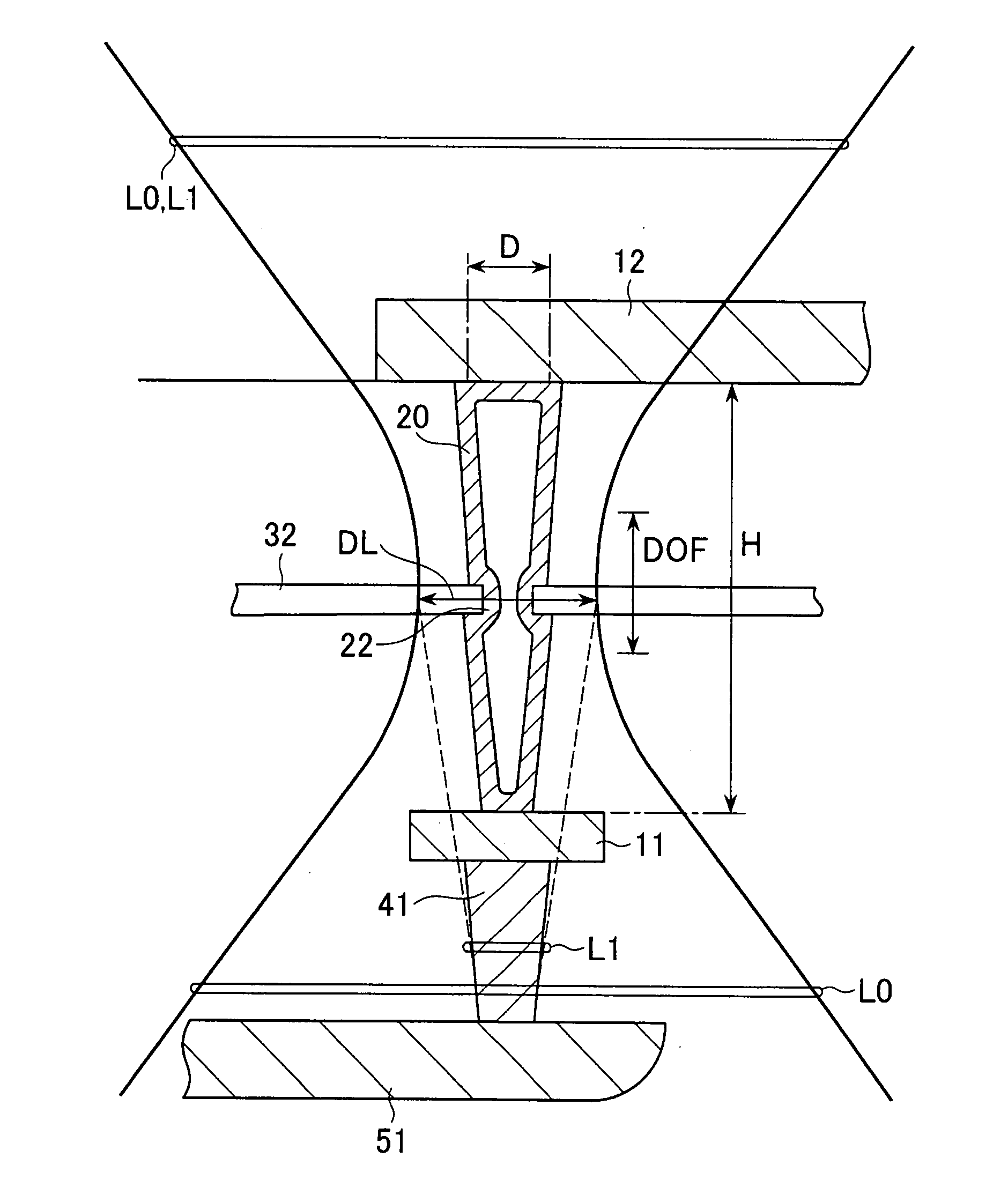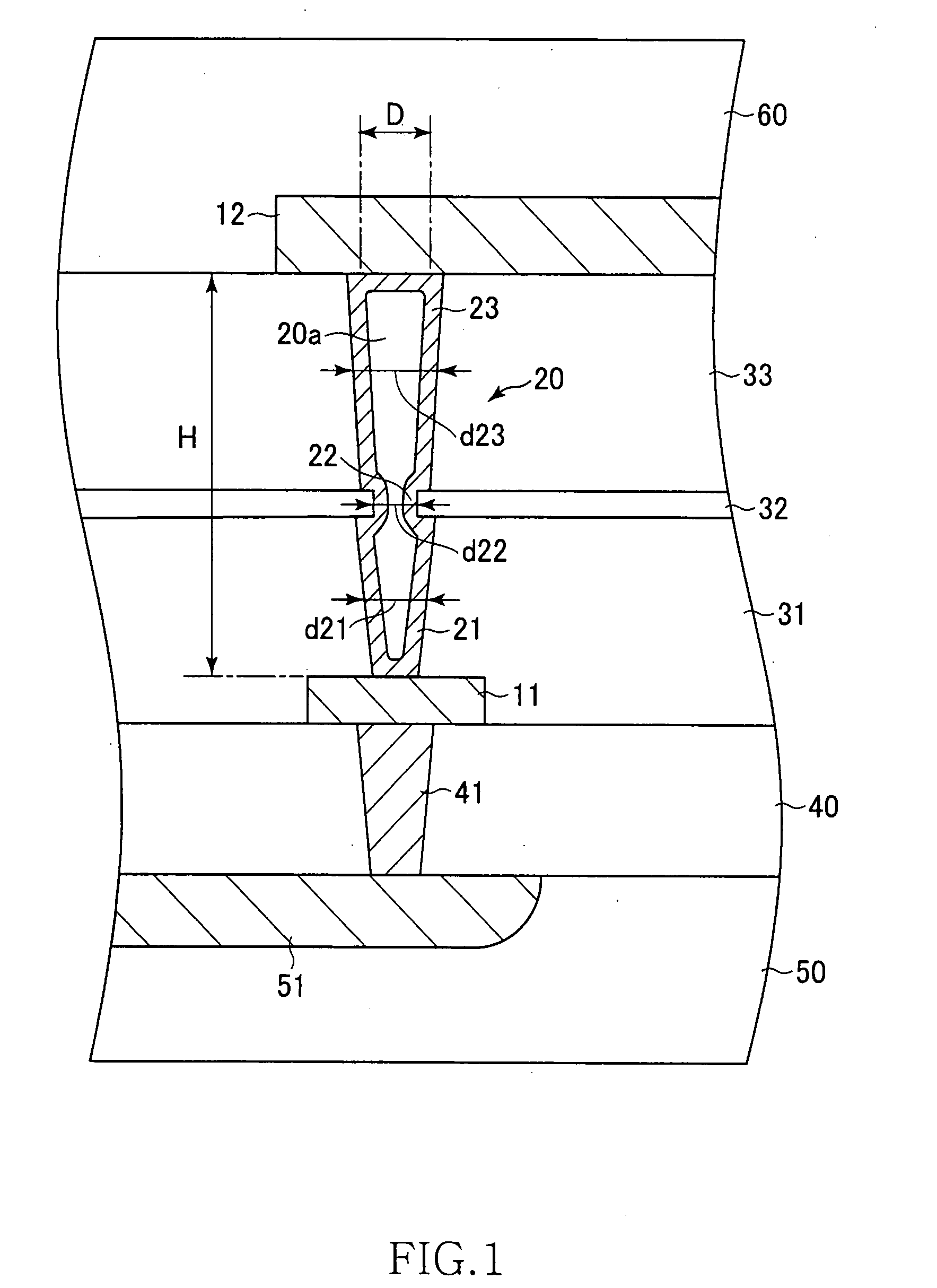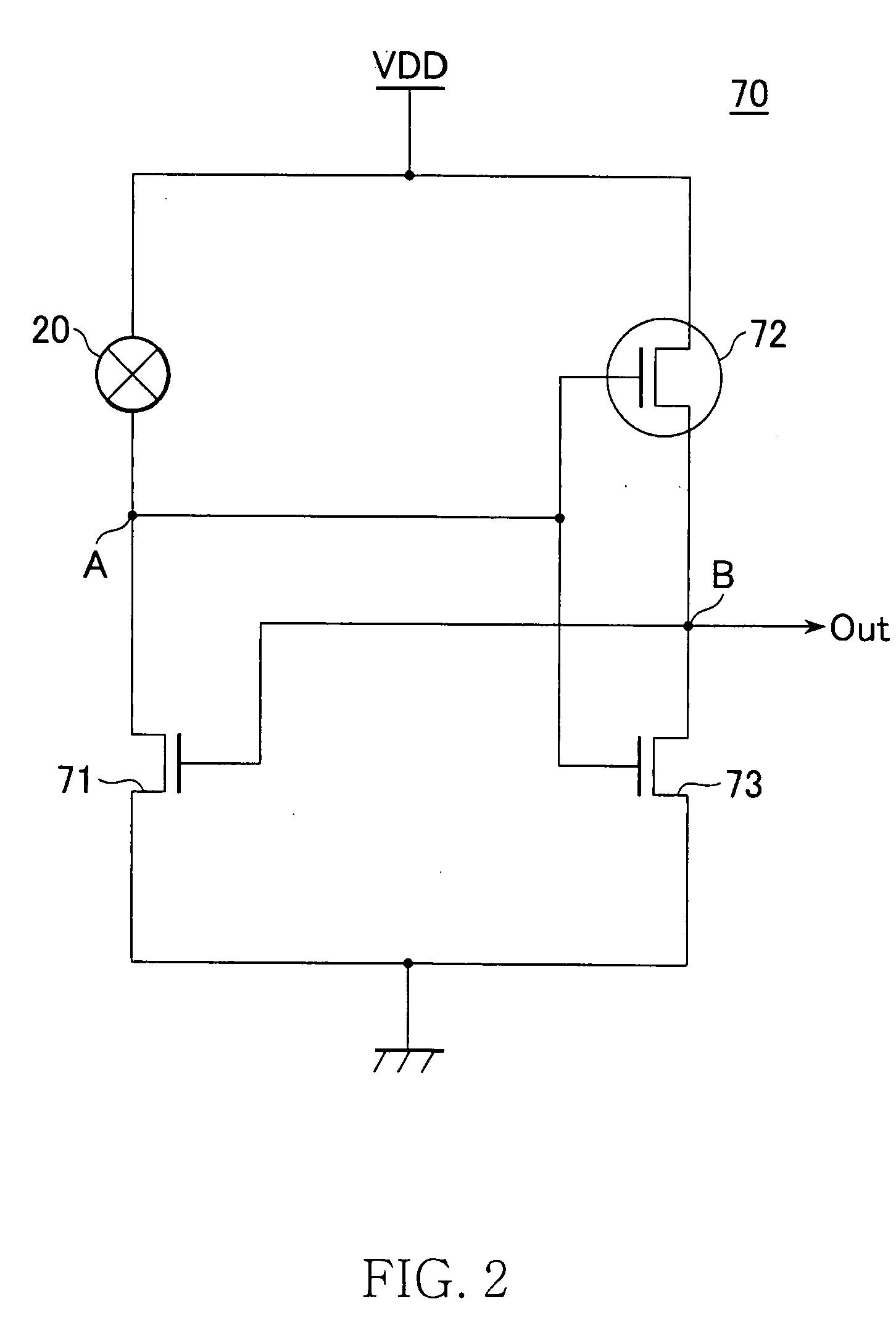Semiconductor device having fuse element and method of cutting fuse element
a technology of a fuse element and a device body, which is applied in the direction of semiconductor devices, semiconductor/solid-state device details, electrical devices, etc., can solve the problems of heavy damage on the member, and achieve the effect of effectively absorbing the energy of the laser beam, and small damage on the part located above or below the fuse elemen
- Summary
- Abstract
- Description
- Claims
- Application Information
AI Technical Summary
Benefits of technology
Problems solved by technology
Method used
Image
Examples
first embodiment
[0045]FIG. 1 is a schematic cross section of the structure of a fuse element included in a semiconductor device according to a preferred first embodiment of the present invention.
[0046]As shown in FIG. 1, the semiconductor device according to the first embodiment includes a lower electrode 11, an upper electrode 12, and a fuse element 20 that connects the lower electrode 11 and the upper electrode 12. The lower electrode 11 and the upper electrode 12 are electrodes formed in different wiring layers. Between the both electrodes, there exit three layers of insulating films 31 to 33 stacked in this order viewed from the side of the lower electrode 11. Accordingly, the fuse element 20 that connects these components have a height equal to the total thickness of the insulating films 31 to 33 that separate the lower electrode 11 and the lower electrode 12.
[0047]The fuse element 20 has a tubular shape with a hollow portion 20a therein, as shown in FIG. 1. The hollow portion 20a contains gas...
second embodiment
[0108]the present invention is explained next.
[0109]FIG. 17 is a schematic cross section of the structure of a fuse element included in a semiconductor device according to a preferred second embodiment of the present invention.
[0110]As shown in FIG. 17, the semiconductor device according to the present embodiment is different from the semiconductor device according to the first embodiment in that the second embodiment includes, between the lower electrode 11 and the upper electrode 12, four layers of insulating films 31 to 34 stacked in this order viewed from the side of the lower electrode 11, and the fuse element 20 includes a fourth tubular portion 24 that passes through the insulating film 34. Since other features of this embodiment are basically the same as that of the semiconductor device according to the first embodiment, like parts are designated by like reference numerals, and redundant explanations will be omitted.
[0111]The added insulating film 34 is an insulating film lo...
PUM
 Login to View More
Login to View More Abstract
Description
Claims
Application Information
 Login to View More
Login to View More - R&D
- Intellectual Property
- Life Sciences
- Materials
- Tech Scout
- Unparalleled Data Quality
- Higher Quality Content
- 60% Fewer Hallucinations
Browse by: Latest US Patents, China's latest patents, Technical Efficacy Thesaurus, Application Domain, Technology Topic, Popular Technical Reports.
© 2025 PatSnap. All rights reserved.Legal|Privacy policy|Modern Slavery Act Transparency Statement|Sitemap|About US| Contact US: help@patsnap.com



